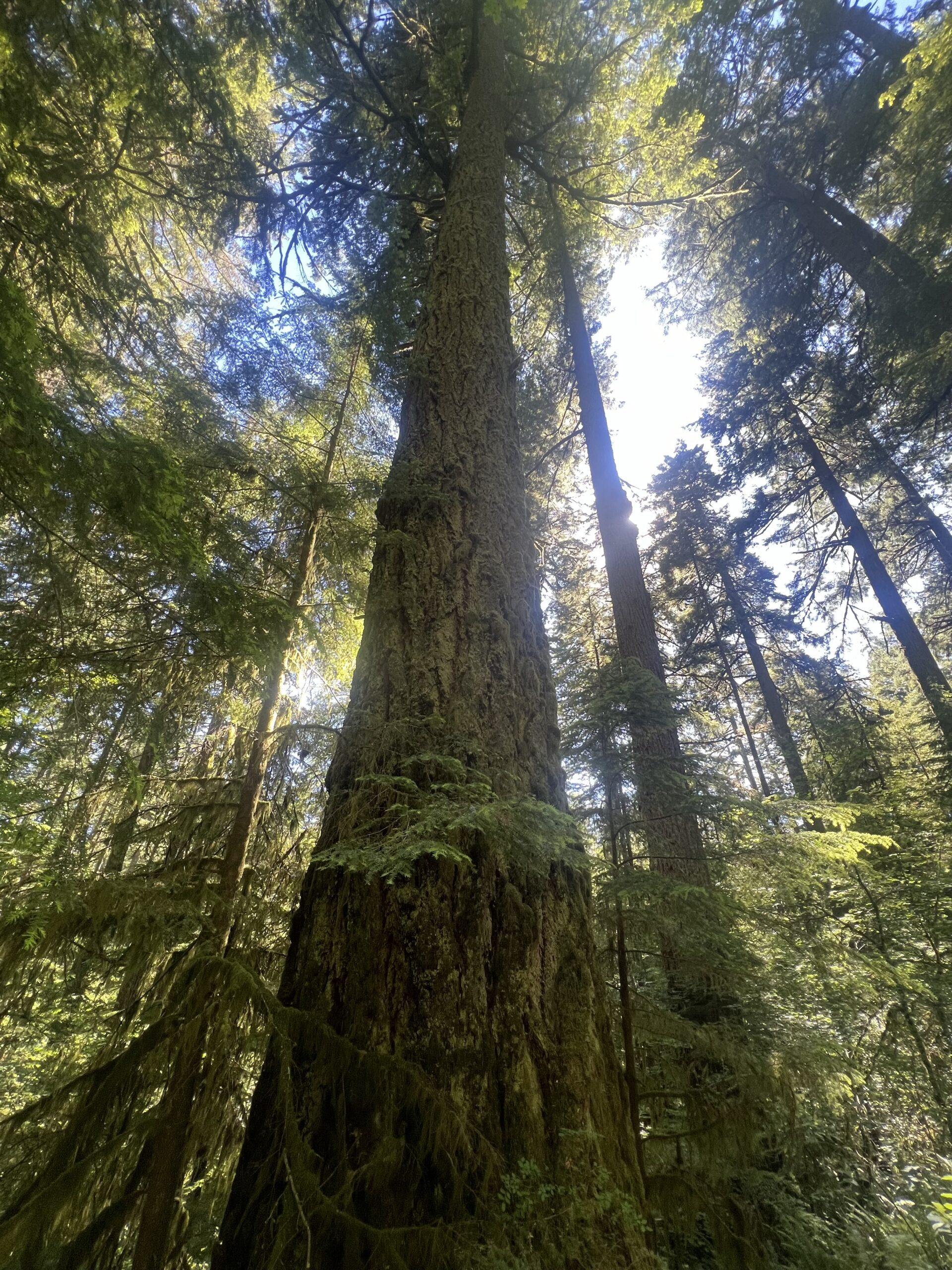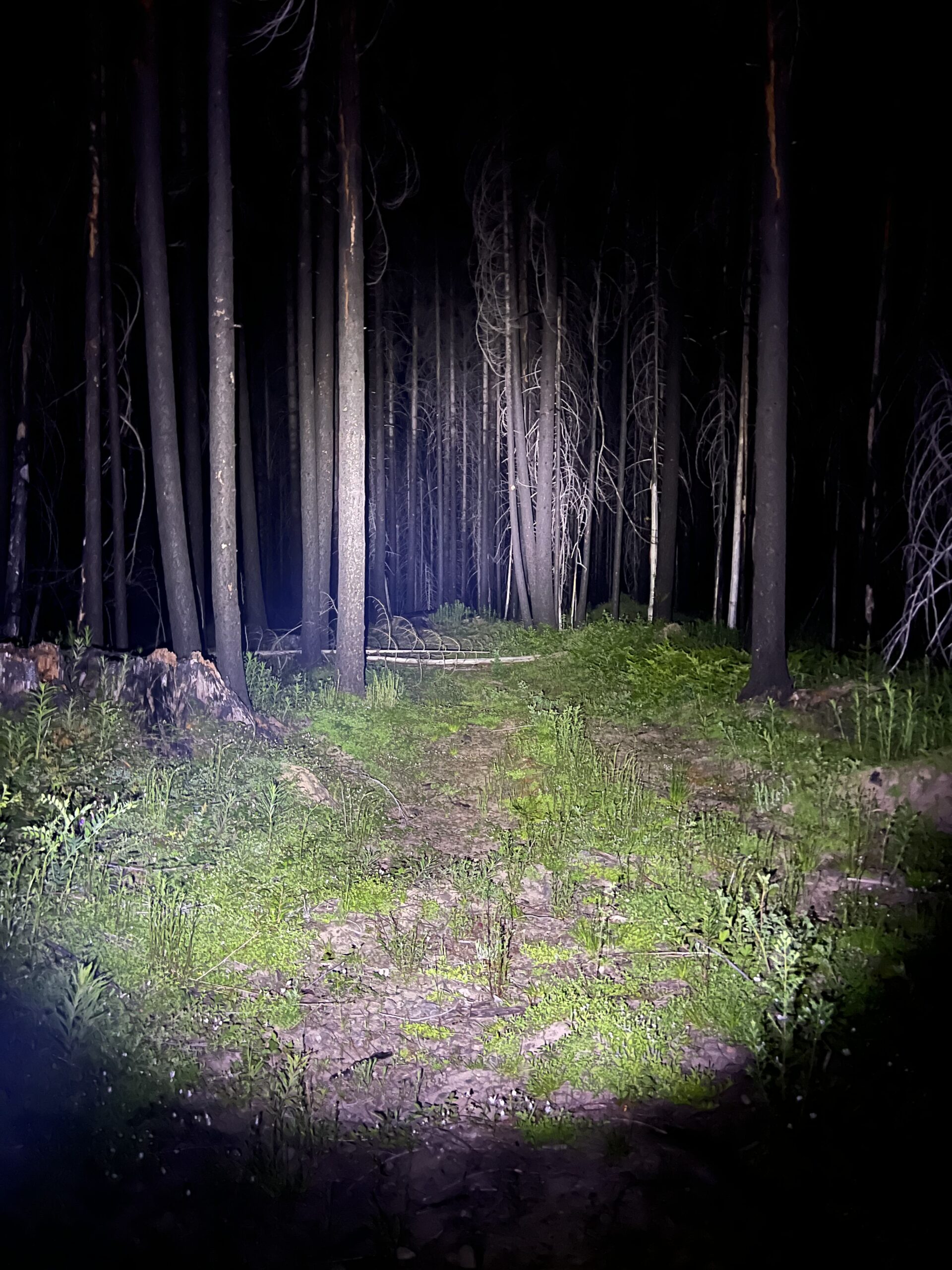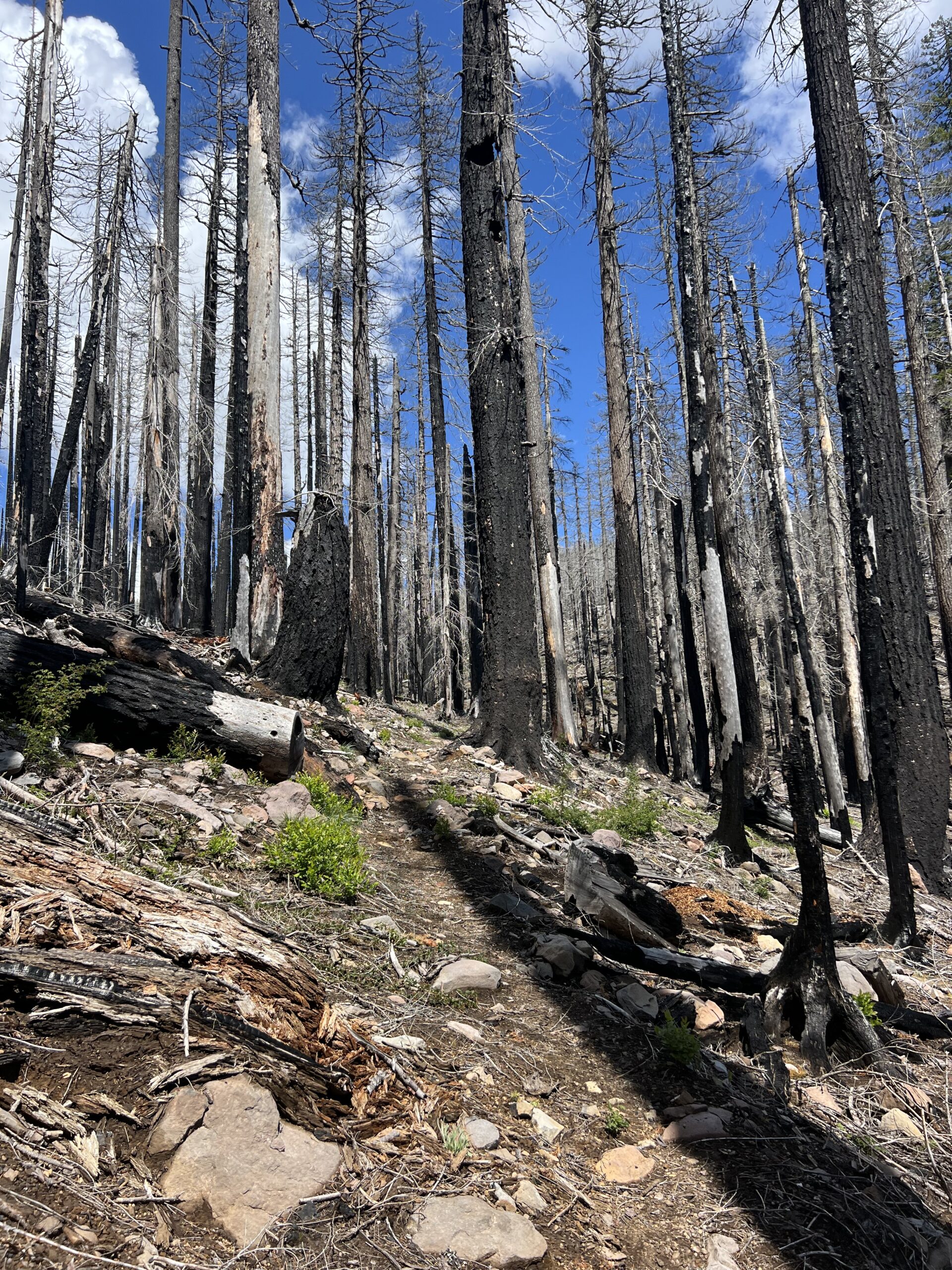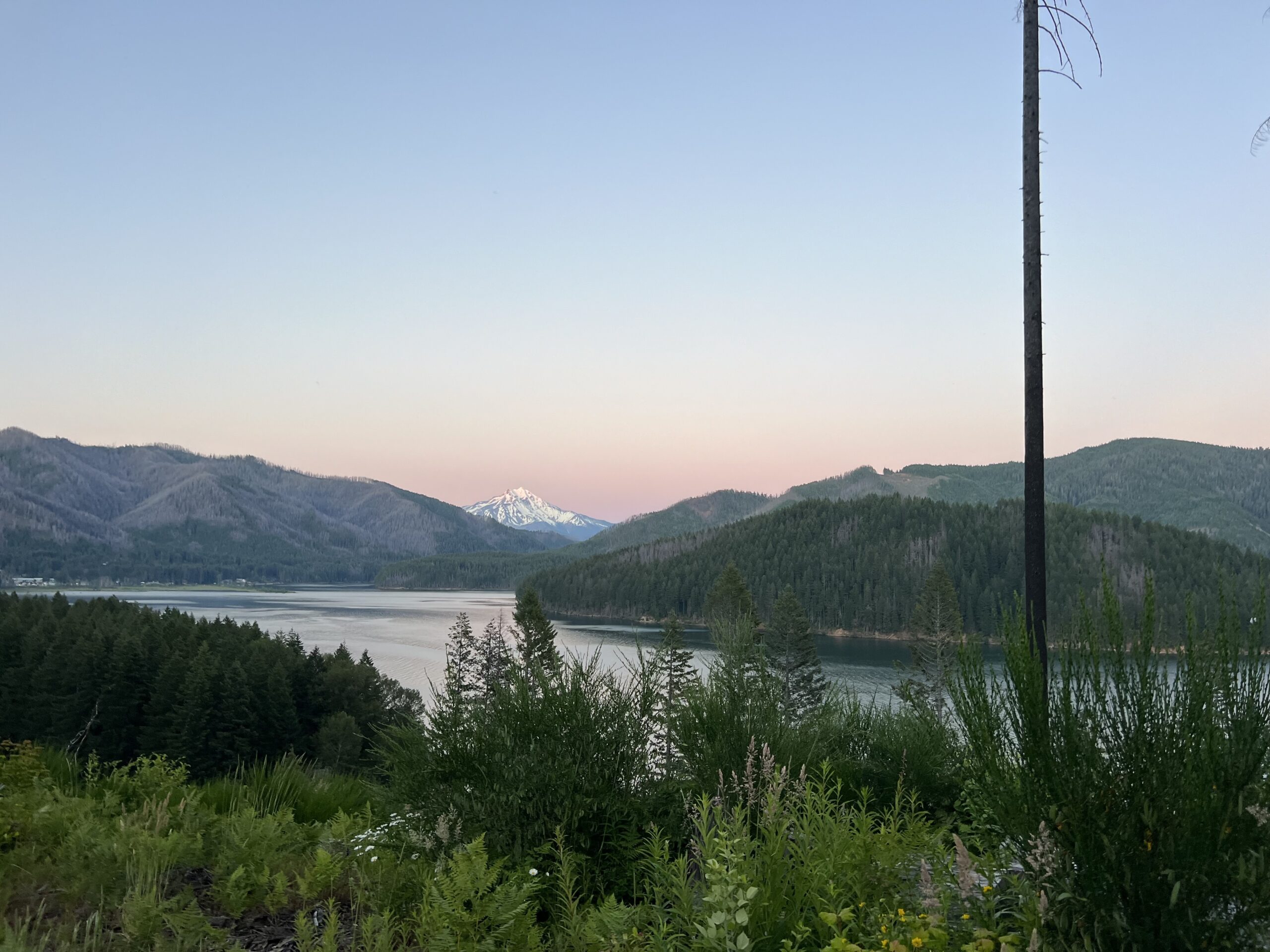As a lifetime east-coaster, moving across the country to Detroit, Oregon was exciting yet daunting. The Pacific Northwest was only known to me through movies (Twilight) and TV shows (Gravity Falls) – each strange in their own right. Basically to say, my expectations for Oregon were big trees, lots of moss, and maybe a vampire or two. The first two criteria were met quickly upon my arrival. As we entered the forest, I squished my nose against the passenger window trying to see the tops of the reigning conifers that lined the highways. The trees became cities with moss skyscrapers dangling from the branches and sprawling lichen suburbia along the bark. As we took the next turn, I turned to look out the front, only to be met with a landscape of devastation. The lush forest turned into a sea of scorched trees. The tree cities became post-apopalyptic, and only the skeletons of the infrastructure remained.

I knew that the forest I would be working in had experienced huge fires in 2020, but it was difficult to imagine the extent without seeing it. The next couple of weeks working in the Willamette National Forest would be drenched in fire talk. Every explanation and description seemed to be sandwiched in between some version of “before the fire” and “because of the fire.” The district I work in had 46% of its forest burned in 2020. One of the major fires of 2020 happened overnight. The fire started miles away and hit a gust of wind that blew it across the hills in a matter of hours. My coworker told me that no one could have predicted it because the area where it happened had high precipitation and moisture year round. Every model and expert denied a fire of this extent would hit the forest.

I’m usually someone who tries to see the beauty in everything, especially when it comes to nature. However, I’m beginning to question if this philosophy can apply here. Should I be trying to find a silver lining in devastation, or should I take the lack of one as a cautionary tale? During my first week here, I was able to get out into some of the burned areas, or “the black” in technical talk. It’s eerie. For miles all you see is blackened trees and mountains covered in gray sticks. Giant trees lay across the ground, charred on the outside, but the wood inside is still tan (to me they looked like big ol’ hot dogs (vegan friendly!) left over the fire too long… my coworkers did not agree). To an unassuming eye it might just look like a dreary winter landscape, but the pockets of green, lush rainforest are a constant reminder of what this landscape fostered only years ago.


There are only a handful of natives here that thrive in disturbed areas, but many invasives have been quick to take advantage of the disaster. Since we (myself and my two other coworkers, Ella and Katie) are here to collect native seeds, the number of invasives can be a bit disheartening, especially when you see how much effort goes into eradicating them. Some of them, like scotch broom, Cytisus scoparius, grow like a hydra – you kill a hundred and the next season they seem to only double. A cross section of the soil underneath would reveal the secret of their doubling act – a seed bank. Beneath the surface are horizons of seeds only waiting for their time to grow, and in doing so, they keep us on the defensive. Once the seed bank is established its pretty much impossible to eradicate the species, and it makes it even harder for native plants to become established.

The invasive species and general fire damage provide a constant reminder of why our work is important. The fires and disasters aren’t going to stop, so the more we can prepare, the better we can restore these ecosystems. I look forward to getting to know the forest as we scout and collect native seeds, and, on sunny days, I’m still keeping my eyes peeled for any glittering vampires, hoping (fearing?) they didn’t all burn up in the fire.

